Ever wondered why some bird feeders stay busy while others barely get a visit? The secret’s not just the food—smart placement changes everything.
Hang feeders at different heights in your garden, at least five feet off the ground and close to cover like trees or dense shrubs. You’ll attract more birds and help keep them safe from predators.
This approach can turn your backyard from quiet to a lively spot, full of bird activity.
Your feeder’s location shapes not only how many birds show up, but also which species. If you put them near windows, you’ll catch a front-row show of chickadees and others.
Keep some distance from busy spots to help birds relax. A few tweaks to feeder placement can quickly make your yard a favorite stop for your feathered neighbors.
Key Takeaways
- Place bird feeders at different heights and at least five feet off the ground to attract more species while protecting them from cats and predators.
- Position your feeding station near trees or dense shrubs to provide birds with quick escape routes and resting spots.
- Hang feeders where you can enjoy watching birds from your window while maintaining a safe distance from high-traffic areas.
Choosing the Ideal Location for Your Bird Feeder
Finding the right spot for your feeder really does make a difference. You want a place that balances visibility, safety, and easy access for both you and the birds.
1. Visibility for Birds and Birdwatchers
If you want to see more birds, put your feeder where you and the birds can spot it easily. A feeder in view from your favorite window turns birdwatching into a daily pleasure.
Birds are naturally cautious. They like to observe feeders before diving in, so pick an open spot that’s easy for them to see from above.
Some birds feed high, others low. Hanging several feeders at different levels brings in a wider variety—cardinals and bigger birds often like platform feeders at eye level, while little perching birds may prefer higher, more protected spots.
Morning sun can help too. Birds get active early, and a feeder that catches that light looks extra inviting.
2. Distance from Windows to Prevent Collisions
Window strikes kill millions of birds every year. You can help by adjusting your feeder placement.
Put feeders within 3 feet of your windows or more than 10 feet away. Up close, birds can’t build up speed to hurt themselves; farther away, they spot the glass as a barrier.
Try a window feeder for an up-close view and zero collision risk. These attach right to your glass—pretty cool, honestly.
If your windows are big, stick on some decals or add window treatments so birds see the glass. The Audubon Society swears by these simple fixes.
3. Proximity to Shelter and Natural Cover
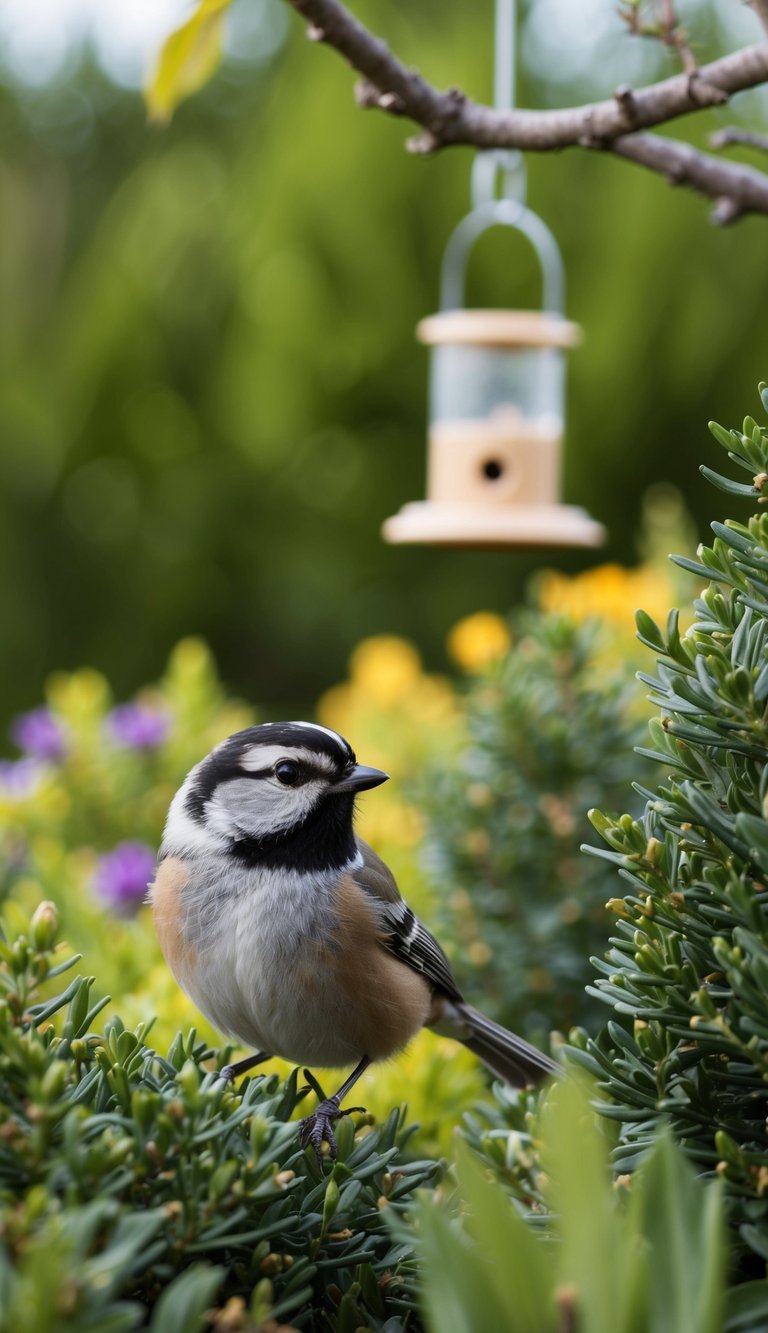
Birds want quick escape routes. Feeders near natural shelter offer safe spots to rest and hide if danger pops up.
But don’t put them too close. Try 10-15 feet from trees or shrubs—not right up against them. That way, birds can dash for cover, but squirrels can’t leap straight onto your feeder.
Remember, cats and hawks know where the action is. Nearby cover lets birds bolt to safety fast.
Different shelters draw in different birds:
- Dense shrubs: Chickadees and finches love these
- Medium trees: Great for cardinals and jays
- Coniferous trees: Year-round shelter, especially in winter
Protecting Your Feeder Guests From Predators and Pests
You’ll want to keep your bird visitors safe. A little planning can mean the difference between a bird haven and a predator buffet.
4. Deterring Squirrels and Unwanted Visitors
Squirrels are relentless when it comes to bird feeders. Try squirrel-proof feeders with weight-activated closers—they shut tight when something heavy lands.
Install a baffle (dome or cylinder) above hanging feeders or below pole-mounted ones. These simple gadgets can really slow squirrels down.
Location helps too. If you have a family of squirrels in your neighborhood, put your feeder at least 10 feet from trees, shrubs, or anything else a squirrel could use as a launchpad. They jump farther than you’d think.
Some folks set up a squirrel feeding station away from bird feeders, loaded with corn or nuts. Sometimes, that’s enough to keep the peace.
🐿️ Squirrel-Deterrent Options:
- Weight-activated feeders
- Dome or cylinder baffles
- Slippery poles (grease with something non-toxic)
- Dedicated squirrel stations
5. Preventing Access by Cats and Other Predators
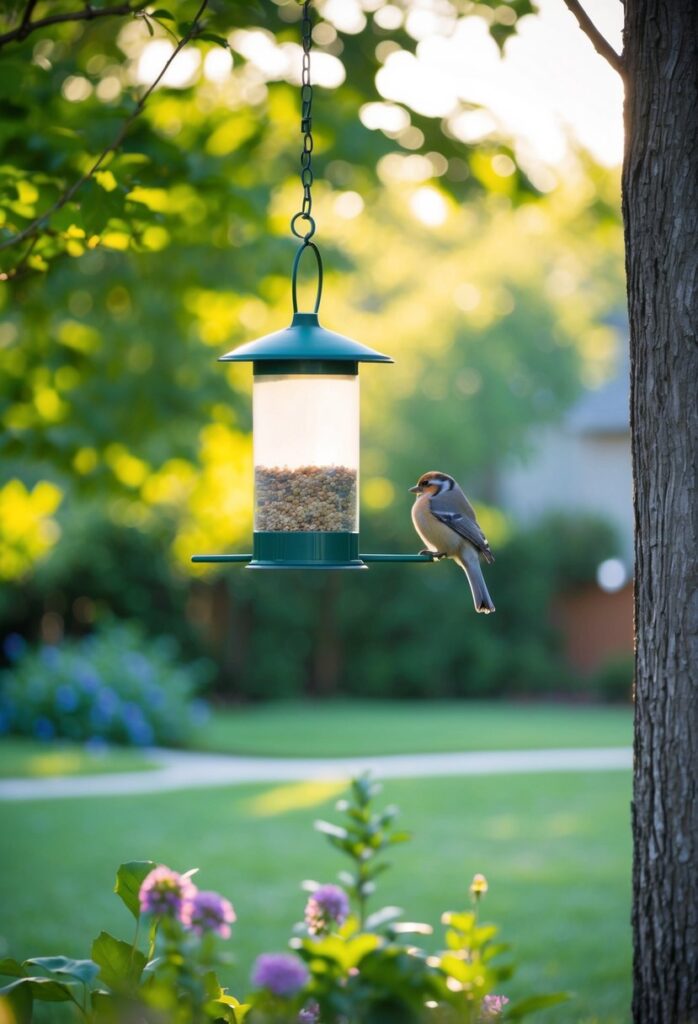
Outdoor cats are a real threat to birds. Place feeders in open spots so birds can see danger coming and keep them about 5-6 feet off the ground—high enough to foil a cat’s jump.
Create a safety buffer zone around your feeders. Skip dense shrubs right next to the feeder; instead, put brush piles 10-15 feet away so birds have somewhere to dash.
Add a “predator guard” (like a baffle) on feeder poles to block climbing critters. If cats won’t quit, try motion-activated sprinklers. They’re harmless and surprisingly effective.
Thinking About Bird Safety and Disease Prevention
Clean feeders keep birds healthy. Scrub every two weeks (more if it’s wet) with a 10% bleach solution, rinse, and dry before refilling.
Don’t let seed pile up underneath. Use a tray or rake up spilled seed to stop mold and disease from spreading.
Scatter feeding stations around your yard to cut down on crowding and bickering. Less crowding means less disease, too.
Bird Health Checklist:
- Clean feeders regularly
- Store seed in a cool, dry place
- Multiple feeding spots
- Safe window placement
- Clean water sources nearby
Feeder and Food Choices for Maximum Visitors
The right feeders and food will bring in more bird species. Every bird has its own favorite way to eat, and the feeder type matters.
Selecting the Best Feeder Types for Local Birds
Want your backyard to buzz with a wide variety of birds? Mix it up! Different birds feed at different heights—sparrows and doves stick close to the ground, finches and cardinals like shrub level, so stagger your feeders to attract a variety of birds.
Tube feeders attract finches, chickadees, and nuthatches—fill them with sunflower seeds for best results. They keep seed dry and are easy to clean.
Woodpeckers and nuthatches go for suet feeders, especially in winter. Hang these on tree trunks or branches for best effect.
Hummingbirds? Use nectar feeders with red parts (skip the red dye). Orioles like orange feeders with nectar cups and fruit.
Food variety matters too:
- Black oil sunflower seeds—almost every bird loves them
- Nyjer seeds—finches flock to these
- Mealworms—bluebirds and woodpeckers can’t resist
- Suet cakes—for woodpeckers, especially in cold weather
- Cracked corn—doves and sparrows go for it
A mix of feeder types and a range of things to eat brings in the most bird diversity.
Maintenance and Seasonal Considerations
Keep your feeders in good shape and move them as the seasons change. Birds’ needs shift throughout the year, so your approach should too.
Adapting Placement by Season
Bird feeding patterns shift with the seasons. In summer, you might see fewer birds at your feeders—they finish nesting in July and find plenty to eat naturally.
During fall migration (August-September), make feeders more visible. Move them to open areas so passing birds spot them easily.
Winter calls for feeders closer to the house—it’s easier to refill them during rough weather. Also, put feeders near dense shrubs to give birds shelter from wind and predators.
Spring means nesting season. Keep feeders about five feet off the ground and add cone-shaped baffles (at least 17 inches wide) to block squirrels and other pests.
During rainy stretches, clean feeders more often to stop mold and disease—just a quick scrub every couple of weeks with a 10% bleach solution keeps your birds healthy.
And if you’re decorating for Halloween or another holiday, keep fake fruits or nuts away from trees and open spaces where birds might get confused.
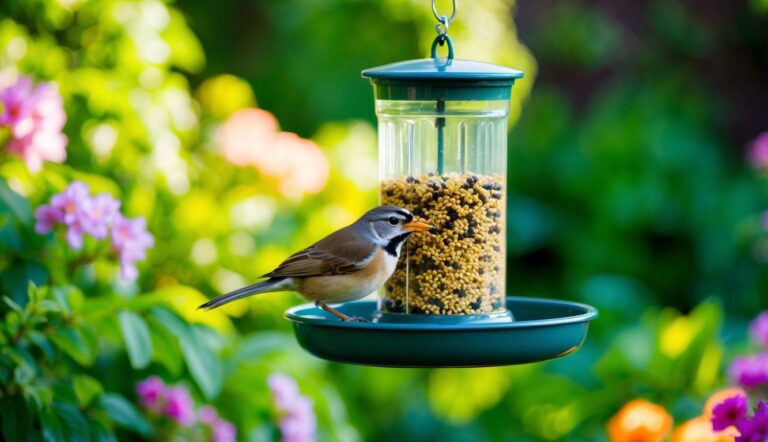
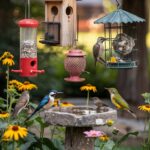
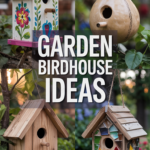
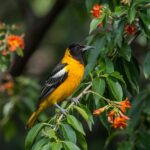
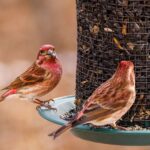
1 thought on “Bird Feeder Placement: 5 Strategic Spots for Attracting More Feathered Friends to Your Yard”
Comments are closed.